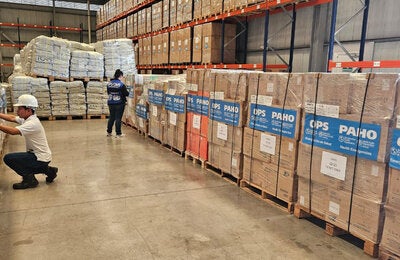
Successful implementation of the framework for monitoring HIV services for key populations in Latin America and the Caribbean.
PAHO/WHO February 17, 2021. In Latin America and the Caribbean, 70-80% of new HIV infections occur among key populations and their clients or sexual partners. High-quality strategic information on the monitoring of HIV prevention services offered to key populations is essential to drive programmatic decisions that put countries on the path to eliminating HIV by 2030.
Since 2019, several countries in the region have strengthened the monitoring of HIV preventive services offered to key populations. Improvements include the strengthening of information systems, capacity building for data collection and analysis, and fostering evidence-based decision making to improve the availability and coverage of HIV and STI services.
By building the HIV prevention and care cascades, 8 countries in the region have measured the impact of HIV services. This impact is determined not only from the number of people from the key population living with HIV maintaining an undetectable viral load but also from the number of people from the HIV-negative key population kept HIV-free through the provision of essential services. Moreover, countries have progressed in measuring civil society's contribution in the response against HIV and STIs. This aspect is essential to guarantee their sustainability and financing from national sources.
The document shown here is a guide for Latin American and Caribbean countries to improve strategic information related to HIV services for key populations through strengthened monitoring using a combination prevention approach.
Related Link



